“ANIMALS in the ZOO are WILDLIFE AMBASSADORS”

Miroslav Bobek, Director of Prague ZOO; Photo: Archive of Prague ZOO
Before the times of Covid, Prague Zoo was ranked the fourth-best zoo in the world by the travel website TripAdvisor. The number of its visitors exceeded 1.4 million people in one year. The annual turnout of all the zoos globally is over half a billion visitors. In comparison to other zoological gardens, the Prague Zoo wins with its varied topography, generous land size, and modern look.
Today, zoological gardens operate in a world where the biodiversity of natural ecosystems is under an ever-growing threat. And it is the zoos, who have the unique opportunity of covering a comprehensive scale of conservational activities from research to protection, including the breeding of endangered species and educational activities in ex situ regime, as well as participating in in situ projects in the field. You will learn more about these program types further on in the interview.
Miroslav Bobek has been the Director of Prague Zoo since 2010. He studied zoology at the Faculty of Natural Sciences at Charles University in Prague, and before joining Prague Zoo he worked for the Czech Radio. He initiated the now legendary project African Odyssey, which monitored the migration of storks, and was also the author of The Revealed project, featuring gorillas from Prague Zoo. He founded the Czech Radio Online division and laid the ground for the launch of the popular-science radio station Leonardo. In less than twelve years under his leadership, Prague Zoo has managed to boost its annual turnout of visitors, increase the zoo ́s financial independence, intensify its breeding successes, and deepen its efforts in the preservation of endangered species. In October 2021, Prague Zoo received the highest possible award from the World Association of Zoos and Aquariums, the WAZA Conservation Award. This prestigious award was received for the Return of the Wild Horses project and for its long-standing contribution to saving the Przewalski ́s horse. This is only the sixth time in history that this world’s greatest honour for zoos has been awarded. Miroslav Bobek was awarded the Medal of Vojtěch Náprstek and received the Medal of Friendship from the President of Mongolia.
I met the director in his office in the functional villa facing the zoo ́s main entrance, where he arrived from the construction site of the new gorilla house, which is now being completed. From the terrace, you get a beautiful view of lower Troja and Troja Château.
Without a generous donation in the form of real estate and land from a farming tycoon of that time, Alois Svoboda, we would not be sitting there. We talked about animal protection in situ (in their natural habitat) and ex situ (within the human care), about the current trends in zoological gardens operations, as well as about the ways we all can help protect nature. We missed the animals during Covid lockdowns. Did they miss us too? And talking about the breeding of Przewalski ́s horses, have you already visited their compound at the other side of Prague, at Dívčí hrady in Prague 5, which is also a part of the zoo?
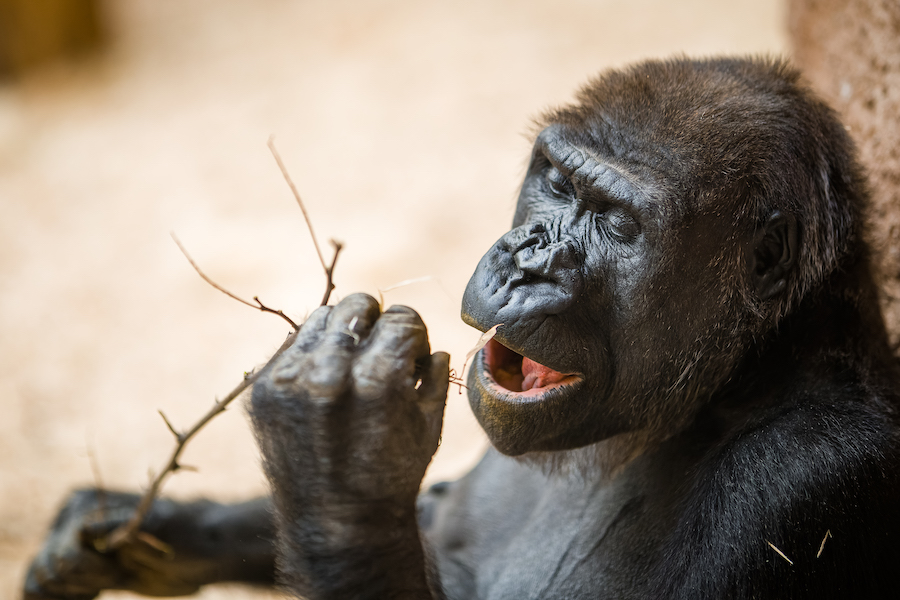
Mr Bobek, congratulations on your WAZA award that you received for the breeding of Przewalski ́s horse, which has been a hundred-year long tradition in our country. When you became director, you wrote down ten points to define your priorities in office – and now, after twelve years under your leadership, Prague Zoo is winning the highest possible award. How do you feel looking back through all these years?
Let me just specify that those ten points did not consider the general management of the zoo but specifically our approach to the socalled in situ projects, i.e., projects focusing on biodiversity conservation of the natural habitats of the species. It was about the way of choosing such species and our further approach to them. Today, this attitude seems standard, however, it was not like this back then. We introduced more rigorous control of invested funds on the spot we prefer projects that we run or manage ourselves to those that we “just” contribute to. The portfolio of the species that we concentrate on reflects our exposition policy. To give an example, I can mention our gorilla conservation project, which, however, aspires to protect a complex natural habitat including all sorts of other species, with gorillas functioning as an umbrella species only.
Let ́s just stay for a moment with the twelve-year retrospection of your term in office. You have been through floods, economic crisis, and now a pandemic…
I am interested in history, and I deal a little bit with the history of Prague Zoo too. I feel profound respect to most directors, and I try to learn as much as possible about them. Many of my predecessors were facing great challenges. Let ́s start with the founder of Prague Zoo, professor Janda, who had to make a huge effort just to create it in the first place. Then, there is a person of Colonel Vlasák who was the director during WWII. Also because of this, it is clear for me that there are not only sunny days but also cloudy ones, and that it is our task to deal with unfavorable conditions.
For you, it is the time of the current pandemic that you need to deal with. I don ́t really want to write about it anymore, however,it appears that Covid-19 is going to stay with us for a bit longer.
We have approached Covid with great caution and respect since the very beginning. There are not only numerous zoologists among us, but biologists too. We have never underestimated the danger of Covid and have sometimes even had stricter precautions towards our visitors and employees than those of the government. For example, we closed our pavilions very early on with the aim to mitigate the spread of the infection. We still respect Covid these days. My concerns about the impact of the whole situation may have been even greater than what reality has shown us so far. I am saying “so far” deliberately because we are aware it is not over yet. There are dynamics in the disease itself as well as the connected economic implications. At the very beginning, we have implemented serious restrictions in the form of austerity measures and with time we also started reaching out to the public for help. If we thought the pandemic had finished today, we could assess that we managed it very well. Some resources were saved and in other cases our financial reserves were used, and some items were covered by the establishment or by using donations from the public. However, the pandemic is not yet over, and concerns over it are still justified. Some of our greatest business partnerships are indicating to us that funding will be limited. We are witnessing increasing costs everywhere. This interview is supposed to be timeless therefore we should avoid further discussion on energy prices. So, we are constantly focusing on reducing our operation costs. Fortunately, our investments have not been affected yet. We are prepared for the fact that the economically lean period is not over yet.
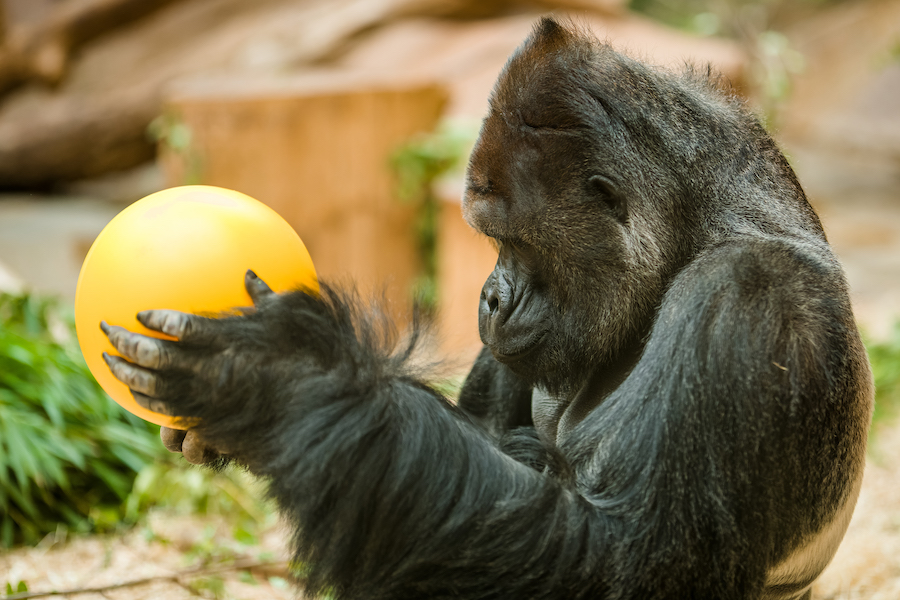
How did the animals manage the situation, did any of them suffer from Covid? People missed the zoo, especially families with children. Did the animals miss us too?
There were some cases of Covid-19 among gorillas and felines. Fortunately, they were only mild cases. Ill animals had runny eyes and noses, some experienced mild respiratory problems. This could not have been prevented. The keepers maintain close contact with the animals and the delta variant proved to be highly contagious. “Did the animals miss the people?” is a question I am often asked. The answer covers two issues. The first is change. When people suddenly disappear, animals can feel the change. And each change causes vigilance and fear. After all, this does not apply only to animals but humans too. When you don ́t have an explanation for a change, it disturbs you. The other issue is connected to the fact that for some animals, the visitors represent a welcome distraction. Sometimes I say that the same way people observe the animals in the zoo, the animals observe the visitors too, often with the same level of interest. In such cases, the visitors function as a certain form of enrichment of animal life.
Let us go back to the funding. How successful are you these days in fundraising? In addition to the already mentioned WAZA award, the media has reported a generous inheritance being bequeathed.
First, I would like to mention adoptions or sponsoring the animals, purchasing meal tickets for them and other similar forms of support they are not only valuable economically to us, but they also mean a great deal of encouragement for us. The inheritance of eight digits that you have mentioned represents really a prominent bequest. Partly it is cash and partly real estate. We are incredibly happy that people think of us in their final testaments. It was thanks to patronage that Prague Zoo was created in the first place. People do not know much about the bequest of Alois Svoboda, a big Troja landowner, patriot and benefactor who donated Troja Château and a large piece of land in Troja to the Czechoslovak state, where Prague Zoo and Botanical Garden were established later. Rakos ́ house for rare parrots holds the legacy of a recognised bird breeder Stanislav Rákos enabled us to build the house, with the support of his wife. Of course, we also appreciate the above-mentioned bequest, which at the same time means a great commitment for us.
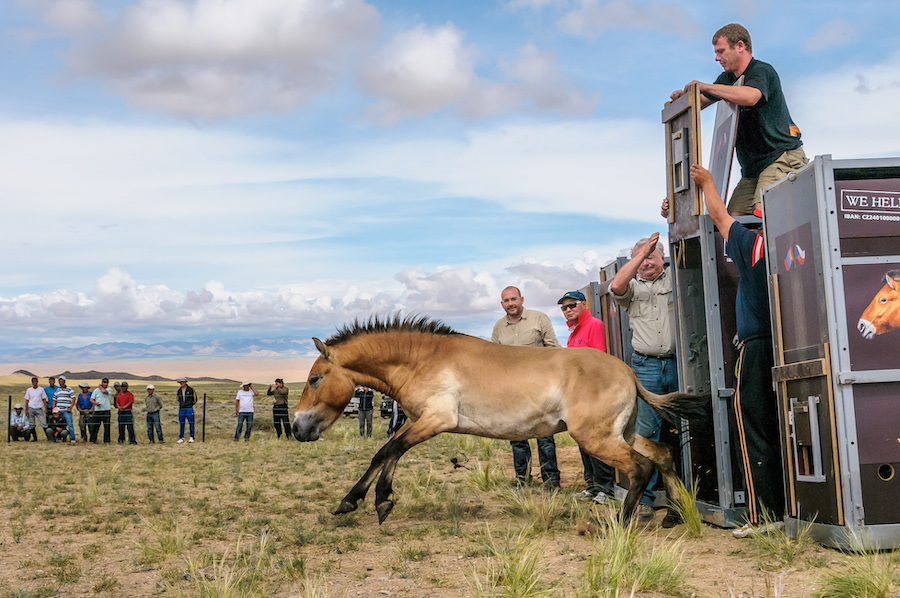
The Czechs are considered generous donors, especially in one-time campaigns. When helping Australia, we raised more than twenty-three million Czech Crowns. Are you successful in facilitating a longterm cooperation with donors?
Yes, burnt koalas who became the symbol of burning Australia raised great sympathy and solidarity. In a similar way, people responded to our appeal during the pandemic, and we received help in the form of animal adoptions. During the first phase of the pandemic, we were careful about our requests for help. Unlike the floods, when we were asking for help really intensively. With all due respect to those affected by the floods, they did not hit such a great part of the population. At the time when the Covid pandemic was just starting, it seemed like almost everybody would be in need of some help. Later, we started asking for help, however, we refrained from statements like “the animals will die if you don ́t support us” it wouldn ́t have been true.
Animal adoption and sponsoring has a long tradition in our zoo. We are glad that even whole companies or classrooms also take part in this project. Czechs are sensitive and try to help. And help during a crisis is inherently more generous than continuous support.
My favourite question of recent times is: what are you looking forward to when you stop solving problems arising from Covid?
We live and work now too. When Covid is over, we will have one thing less to worry about. Let me return to the previously mentioned investments that we want to continue with. Today, I spent three hours at the new gorilla house, which is now being finished. I look forward to starting the construction of the Arctic pavilion. I look forward to the arrival of the new animals, I rejoice in the young. I am happy when our in situ projects, which were most affected by the pandemic, work. We had to interrupt the transports of the Przewalski’s horses to Mongolia, activities in Africa slowed down. Of course, I look forward to the number of visitors returning to normal. People still visit the zoo, but we miss foreign tourists. I look forward to the end of the restrictions. And I look forward to transportation of the animals becoming easier. If we had no Covid, pangolins would have already been here. As things are currently, we can only look forward to them arriving in spring 2022.
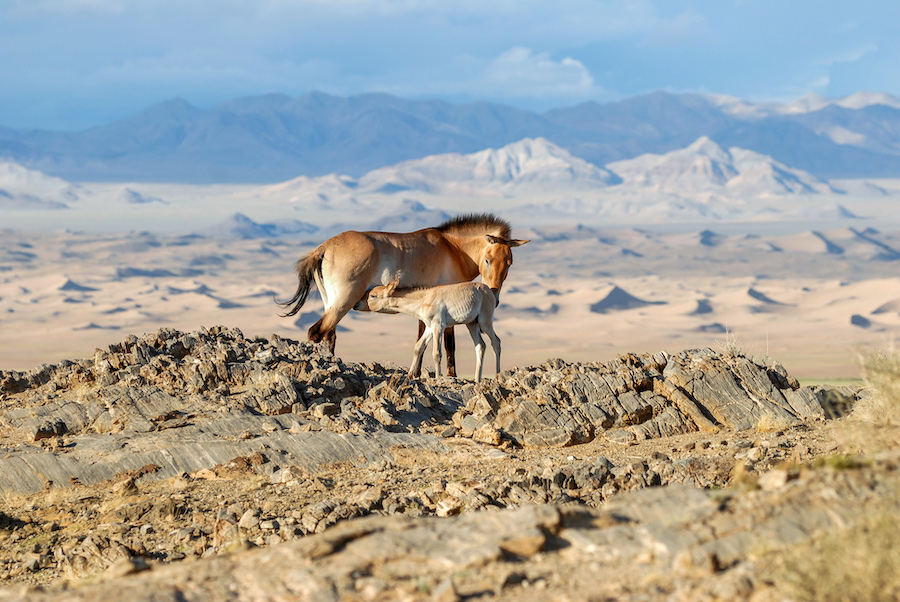
What does a future zoo look like? In Israel, I saw a museum that has no exhibited items but multimedia and stories instead. Famous circuses have started performing without animals, however, I can ́t imagine a zoo without them.
Do you know how it is with forecasters? They tell their prognosis just to be proved completely wrong later. I am not a forecaster. I assume your question considers the next 40 – 50 years outlook. So, we can start by thinking about the current trends regarding relationships to animals. We try to address their needs more and more. And we also know more and more about these needs. It is the space that plays a crucial role. Demands for the breeding of big cats, apes and elephants versus the space needed for those are all substantially increasing. It means that in the future, zoological gardens will keep a lower number of animals in larger spaces. Another important feature will be acceptance of the zoos ́ role in the field of biodiversity conservation and in relation to that, breeding of species with the aim to maintain the population or even return to nature. However, this will not be their primal activity. There are too many endangered species but too little space in the zoos.
Far more important will be the presentation of the animals, which the zoo tries to protect in nature. A typical example is the gorillas. They are wildlife ambassadors, who the visitors can see in our garden and fall in love with. Then, they are far more willing to open up to the fact that it is necessary to protect gorillas in their natural habitat, in the wilderness of Africa. This emphasis will gradually increase. I don ́t want to talk about smart technologies, but since you already mentioned a museum without artefacts, for me it is important to see the individual real objects in the museum. If museums change into buildings with large screens and computer animations, then it makes me question whether I can ́t just watch the film at home?
To see animals with your own eyes, experience them and sometimes smell them, to simply be there, all of that is of great value, which is irreplaceable. And it is an environmentally friendly option too. Seeing elephants in our zoo is much better from this point of view than having to travel to Sri Lanka to see them.
Prague Zoo is exceptional in many ways. Czech visitors of the zoos in neighbouring countries are then disappointed when they find those local zoos are cramped and run down. Where do you get your inspiration from?
I get inspired by the zoos in New York and San Diego, some German zoos and others. You can find some inspiration in those older or run down gardens too, and inspiration may also be found at places with no connection to the zoos. However, what I really find important is a good knowledge of animals ́ natural habitats, in Africa or Asia. We look for inspiration for our buildings at concrete locales, and I then show the architects the photos from the places we visited. We do our best to make our buildings reflect these natural habitats as much as possible.
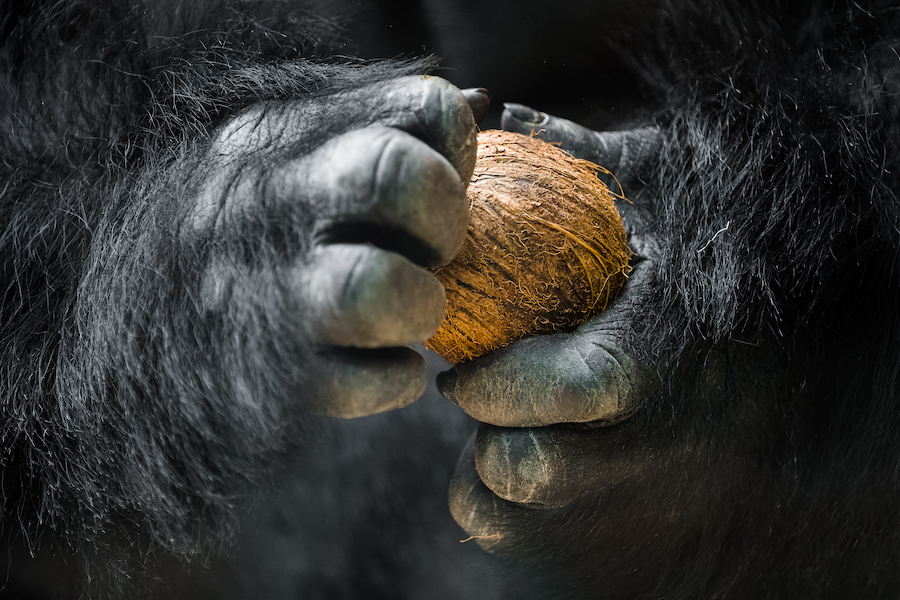
The last question comes from my children. When exactly should we visit to see the animals being active? We were repeatedly unlucky with a small hippo who was active during TV coverage, but we always found him sleeping.
Animals need their comfort, and they sleep a lot. We definitely do not want to activate them artificially. Ensuring peace for the animals is ethical. Therefore, I recommend guided tours at the time of feeding. The keeper talks about the animals, and sometimes their feeding includes veterinary exercises, for example with the seals. We are back to (talking about) the educational role of zoological gardens, when it is the zoo that, through its educational and training activities, influences the general public. And thanks to the potential of live animals, the zoo can affect the views, attitude, value creation, and behaviour of its visitors.
Linda Štucbartová

